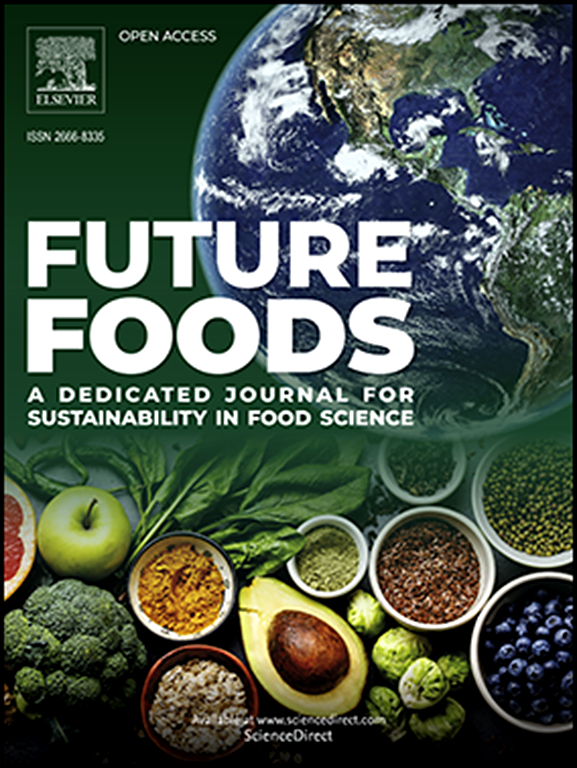Meta-analysis on the fatty acid composition of edible insects as a sustainable food and feed
IF 8.2
Q1 FOOD SCIENCE & TECHNOLOGY
引用次数: 0
Abstract
Edible insects align with multiple SDGs by offering sustainable solutions for zero hunger, food security, environmental conservation, health and economic development. Further assessment on their benefits might support wider utilization. The current work intended to elucidate the composition of fatty acids from the top 10 most researched edible insects using meta-analysis. A total of 222 articles was chosen and analyzed using a mixed-effects model and Hedges' d effect size. The observed parameters were 25 short- and medium-chain fatty acids, and 17 long-chain fatty acids. Further evaluation of the fatty acids content compared to beef was also performed. Mealworm, Mulberry silkworm, and Long-horned grasshopper were found to contain the highest levels of unsaturated fatty acids (73.4, 68.6 and 63.7 % of total lipids, respectively). The Mulberry silkworm found to have the highest omega-3 content (13.7 % of total lipids). Compared to beef, some edible insects seem promising for providing nutritious fatty acids. Moreover, these favorable content of lauric and myristic acids provide some expected advantages for further utilization as a feed, which produces more nutritious livestock with lower greenhouse gas emissions. Further research is needed to enhance the promotion of locally edible insects as viable sources of nutritious food and feed.
食用昆虫作为可持续食物和饲料的脂肪酸组成荟萃分析
食用昆虫通过为零饥饿、粮食安全、环境保护、健康和经济发展提供可持续解决方案,与多项可持续发展目标保持一致。进一步评估它们的益处可能有助于更广泛地利用它们。本研究旨在利用荟萃分析的方法,阐明研究最多的10种食用昆虫的脂肪酸组成。共选择了222篇文章,并使用混合效应模型和Hedges' d效应大小进行了分析。观察参数为25种短链和中链脂肪酸,17种长链脂肪酸。还进行了脂肪酸含量与牛肉的进一步评价。粉虫、桑蚕和长角蚱蜢的不饱和脂肪酸含量最高(分别占总脂质的73.4%、68.6和63.7%)。桑蚕的omega-3含量最高(占总脂质的13.7%)。与牛肉相比,一些食用昆虫似乎有望提供有营养的脂肪酸。此外,这些有利的月桂酸和肉豆蔻酸含量为进一步利用饲料提供了一些预期的优势,从而生产出更有营养的牲畜,减少温室气体排放。需要进一步研究,以加强促进当地食用昆虫作为营养食物和饲料的可行来源。
本文章由计算机程序翻译,如有差异,请以英文原文为准。
求助全文
约1分钟内获得全文
求助全文
来源期刊

Future Foods
Agricultural and Biological Sciences-Food Science
CiteScore
8.60
自引率
0.00%
发文量
97
审稿时长
15 weeks
期刊介绍:
Future Foods is a specialized journal that is dedicated to tackling the challenges posed by climate change and the need for sustainability in the realm of food production. The journal recognizes the imperative to transform current food manufacturing and consumption practices to meet the dietary needs of a burgeoning global population while simultaneously curbing environmental degradation.
The mission of Future Foods is to disseminate research that aligns with the goal of fostering the development of innovative technologies and alternative food sources to establish more sustainable food systems. The journal is committed to publishing high-quality, peer-reviewed articles that contribute to the advancement of sustainable food practices.
Abstracting and indexing:
Scopus
Directory of Open Access Journals (DOAJ)
Emerging Sources Citation Index (ESCI)
SCImago Journal Rank (SJR)
SNIP
 求助内容:
求助内容: 应助结果提醒方式:
应助结果提醒方式:


